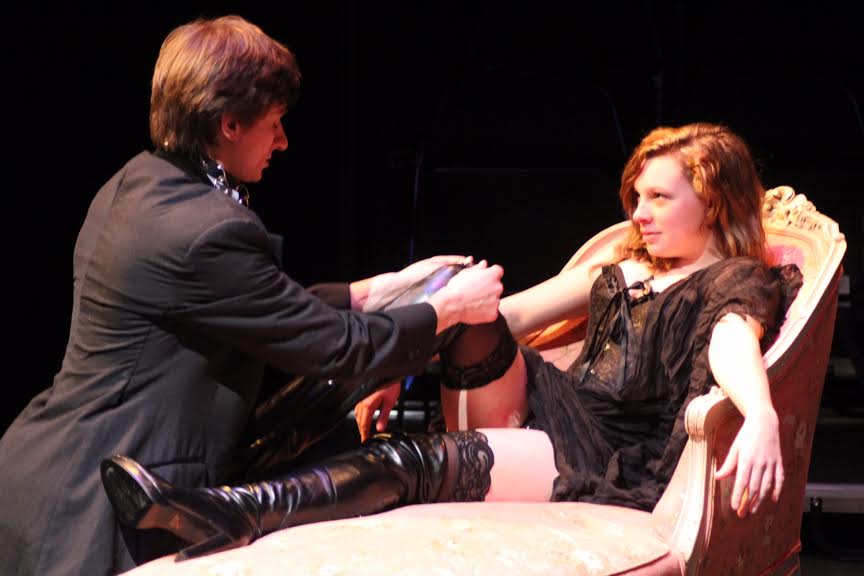“Venus in Fur” shows the fury of a woman scorned
“Venus in Fur” shows the fury of a woman scorned
By Katie Stephens
The lights were dim and the plot was twisted during the production of “Venus in Fur” opened Friday, Feb. 27 in the Haslam Family Flexible Theatre at Maryville College. Performed by Alpha Psi Omega, the David Ive’s drama held much more meaning than the long legs tethered in fish-nets, lace and heels that were plastered on the posters around campus.
Directed by senior Daniel Noles, ““Venus in Fur,” was a captivating performance about dominance and female empowerment. The play consisted of two main characters played by seniors Matt Lyscas and Sara Deatherage. The play opened with an intriguing soliloquy by the male lead, Lyscas, which hooked the audience from the first words spoken.
The play follows a young playwright who is desperately looking for someone to play the lead of his adaption of a famous novel. The playwright, Thomas, is thrown in for a surprising and long night when a young and surprisingly cunning actress, Vanda, walks in and does not take no for an answer. The two embark on an eye opening and twisted night.
Lyscas and Deatherage both performed convincing portrayals of two characters that were fighting within themselves and the roles they were to fill within their own play. The emotions were raw and the rage was electrifying. Deatherage took her character of the dominant Vanda to the top in an exhilarating finale that one would have not expected. She proved to the audience how powerful a female can be whether in a conservative and white “eighteen and whatever” dress, or a sexy display of black heeled boots and tights that rise to the mid-thigh.
Not only were the characters and costumes shocking, but so was the use of props and setting. The entire play is performed in Thomas’s office. A few chairs, a divan, coffee and a table were the extent of the props used. However, the simplicity in the objects focused in the attention on the actors and the personas that evolve throughout the play.
Other effects also added to the dynamic of the play. The audience was alerted to an important scene with a struck of thunder. Lighting was also used effectively on the set. Lights would change from a bright fluorescent to a dim glow that changed the atmosphere depending on the context of the scene. The setting changed simultaneously with the personalities of the characters. If a characters mood was brighter and happy then so would be the set. However, if a character was expressing dark emotions the set would dim with dramatic effectiveness.
Overall, the message of “Venus in Fur” was well communicated by the set, actors and director. Vanda’s character brought to life the struggle of femininity and dominance in a male governing society. The play brought to life the humanistic struggles of the characters and got the audience’s attention. The chilling plot twist left the audience thinking on the gender roles in society, and was a reminder that “Hell hath no fury like a woman scorned.”

